A few days after Hurricane Irma slammed into south Florida ― while there were still tight travel restrictions and curfews in place ― Bette Zirkelbach stocked an ambulance with supplies and raced south.
The drive from the panhandle, where she’d taken refuge from the record-breaking storm, to Marathon, a city in Florida Keys, was supposed to take 10 hours. In the wake of the disaster, it took Zirkelbach nearly a full day to reach the low-lying string of islands jutting into the Gulf of Mexico.
Zirkelbach didn’t even pull over for a break. She had 44 ill and recovering turtles to return to.
When she arrived, Marathon looked like a “war zone.”
“It was very scary,” she told HuffPost.
Zirkelbach is the manager of The Turtle Hospital in Marathon, the world’s first licensed veterinarian hospital dedicated entirely to serving turtles. Since 1986, the nonprofit has been rescuing, rehabilitating and releasing sea turtles ― five species of which are found along the coast of the Sunshine State ― back into their natural habitats. It has three “turtle ambulances” that it dispatches to pick up creatures in distress, and rescues over 100 turtles a year.
More than 50 percent of juvenile sea turtles in developed islands around the equator suffer from a virus called Fibropapilloma, which causes debilitating tumors. Turtles with the condition often succumb to starvation, boat collisions or shark attacks from impaired vision. The Turtle Hospital is one of only four facilities in Florida that treats the issue.
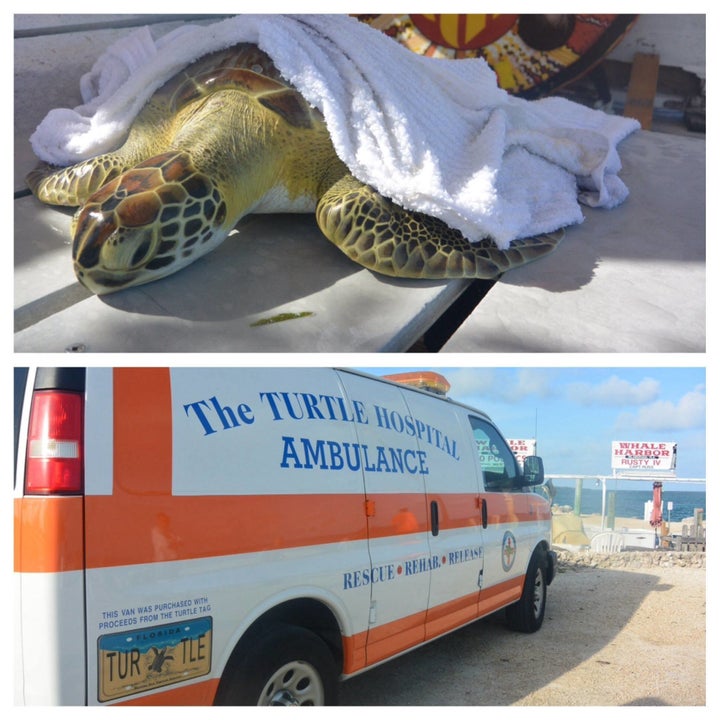
While the facility has dealt with a number of storms, no two are alike. Irma, which struck the Keys as a Category 4 on Sept. 10, destroyed homes, temporarily knocked out power and cell service, and killed at least 14 people. Fortunately, The Turtle Hospital was ready ― and managed to save all its turtles.
Staffers couldn’t anticipate every challenge the storm brought, but part of preparation is learning from past disasters.
“It’s always a concern,” Zirkelbach said of hurricanes in the area. “There’s nothing we can do to prevent them. But we do everything we can to be prepared.”
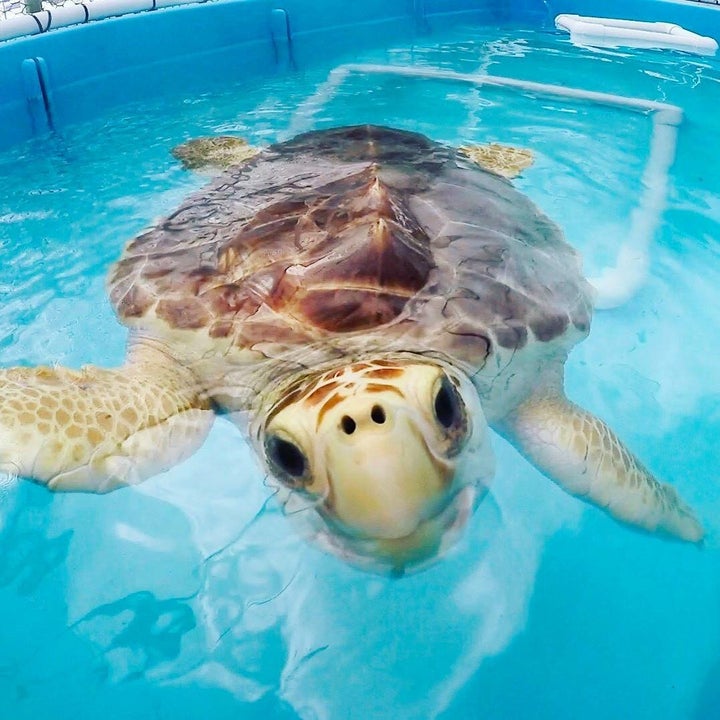
When Hurricane Wilma hit in 2005, wreaking $22.3 billion in damage on Florida, the Turtle Hospital’s disaster systems weren’t nearly as sophisticated as they are now. Turtles were kept in a tidal pool, which overflowed, and a number of the turtles floated out. Wilma flooded the hospital and the organization’s adjacent motel, which was a money-maker for the nonprofit at the time. The motel was shut down following the storm. The hospital also lost quite a bit of expensive medical equipment.
After that, the organization received a grant from petroleum company BP distributed by the National Fish and Wildlife Foundation. It used those funds to improve its hurricane readiness and purchased two 30,000-gallon hurricane tanks.
As Hurricane Irma made its way to the Keys earlier this month, staff members at the Turtle Hospital focused their efforts on relocating the turtles from their usual tanks to the more protected ones. Most went into the hurricane tanks, which are located outside on higher ground. The very sick turtles (two are nourished with feeding tubes) went into tanks indoors.
The staff also stocked up on food and medical supplies and ensured that their two generators were ready to go.
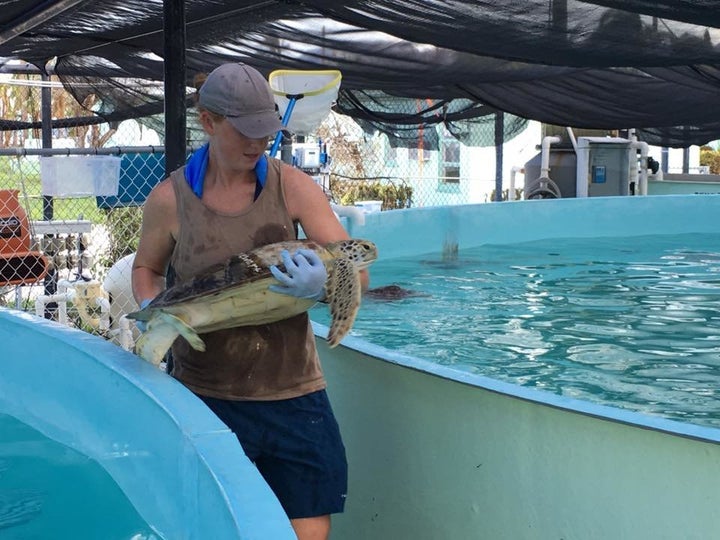
Once all of the turtles were secure, the staff evacuated, other than Richie Moretti, founder and director of the hospital, and Tom Luebke, an engineer at the facility.
They remained even when authorities ordered everyone in the Florida Keys to leave. Even Marathon’s fire department and emergency personnel went to the Upper Keys, closer to the mainland.
Fortunately for the hospital, its location on the bay side of the island spared it from the intense wreckage other structures suffered.

During the storm, the facility lost power and relied on its generators.
Moretti and Luebke returned from their homes to the hospital a day after the storm hit, when the roaring winds had died down a bit. They had a satellite phone, but it didn’t work. For a day and a half, the facility had no communication with the outside world.
“Nobody heard from anybody,” Zirkelbach said. “We didn’t know if the turtles had survived.”
Moretti and Luebke were able to offer up just the basic care ― feeding and medicating the turtles, and draining the smaller tanks home to the very sick turtles.
At one point, a few freezers and refrigerators broke down, putting about 300 pounds of live turtle food in peril. The staff quickly stashed the squid and shrimp in other working refrigerators in the facility, which was critical considering the entire area is still running low on supplies.
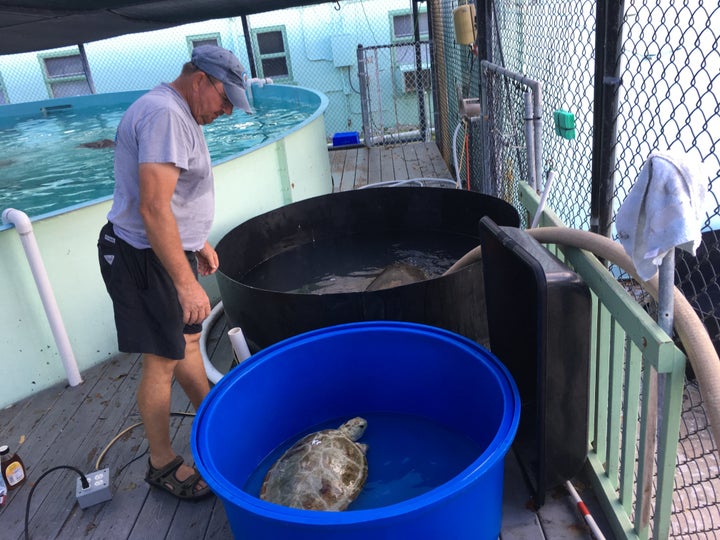
Home Depot, for example, reopened last week, but its suppliers still aren’t coming into the area, Zirkelbach said, and customers there can only purchase 20 items. The local Publix supermarket initially only allowed five customers in at a time.
The Turtle Hospital is getting help from its friends across the state. The Clearwater Marine Aquarium in Tampa, for example, flew in with supplies for the Turtle Hospital and other neighboring animal groups.
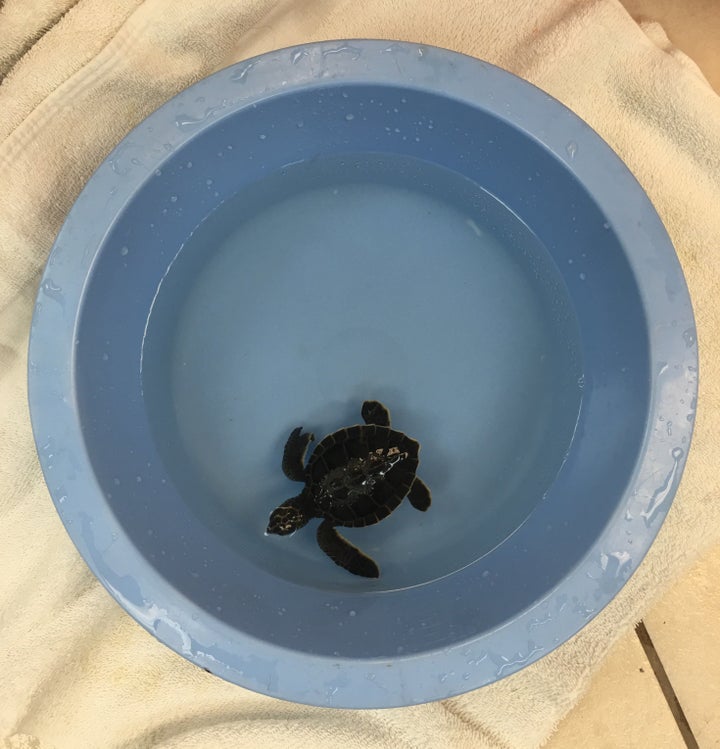
The Turtle Hospital hopes to be fully up and running by Oct. 1. In the meantime, the staff has already resumed rescue and rehabilitation efforts. The turtles are getting back to being pampered, and are reveling in their regular baths.
Since the storm hit, the hospital has rescued three turtles. The first, a hatchling, was aptly named “Irma.”
Zirkelbach is eager to get out of recovery mode and continue to treat the overwhelming number of sick turtles in the area.
Once the hospital reopens, it will also schedule its tours for the public again, as education and raising awareness are a critical component of the nonprofit’s work.
As for future hurricanes, Zirkelbach feels confident and prepared.
“We’re still here,” Zirkelbach said. “Part of living in paradise is keeping an eye on the storm.”
